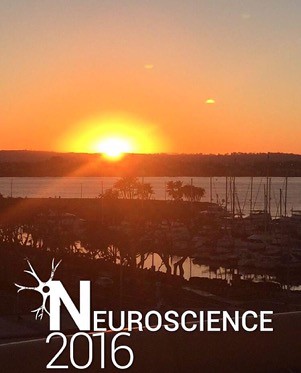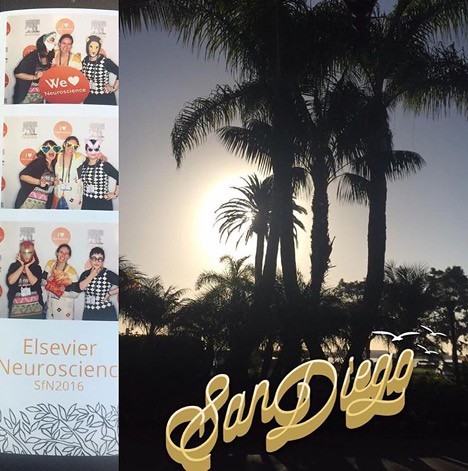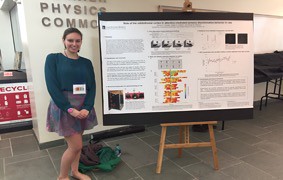Emma Dauster GRAD SCHOOL DIARIES
academia conference neuroscience research
The Society for Neuroscience Annual Meeting
This summer, I submitted my first abstract for the Society for Neuroscience annual meeting. I have attended this amazing science nerd conference every year since I was a senior undergraduate student, and every year I go with different goals.

Figure 1. The view from the San Diego convention center where the Society for Neuroscience annual meeting was held two years ago and will be held again this year. (Source: Emma Dauster)
In the last year of completing my undergraduate degree, I was applying to PhD programs in Neuroscience across the country. The principal investigator of the lab that I worked in throughout my undergraduate career encouraged me to attend the SfN conference that year. He framed it as an opportunity to meet with potential future PI’s so that I could make the most educated decision about where I would spend the next six years of my life. That year at SfN, I set up lunches, coffees, and poster session meetings with the labs I was considering joining to see if we would be a good fit for each other. Being in November, the SfN annual meeting was perfectly timed for me to meet all of these people before applications were due for graduate programs. That way, when they saw my application, they could put a face to my name.

Figure 2. There are rows upon rows of posters at SfN and tons of people crowded together to hear scientists present their research. (Source: Emma Dauster)
Attending SfN was invaluable for those reasons, but also for reasons I didn’t expect. That year’s experience opened my eyes to the kind of research being conducted in neuroscience today. Before attending SfN, I didn’t even know that there were studies being conducted using female subjects! I was told that it is the norm to study males exclusively because females have hormonal cycles that make them harder to analyze. It was widely accepted in the field that the effects of any neuromodulation should be close enough between sexes that it would not make a difference to exclude females. After seeing all of the inclusive science with both male and female subjects at SfN, I decided to pursue similarly inclusive work in the future.

Figure 3. Conferences are actually really fun and a fantastic networking opportunity! (Source: Emma Dauster)
The lab where I am currently earning my PhD in neuroscience and behavior utilizes both male and female subjects in their research and takes it a step further as comparing sex differences is a large part of my dissertation question. I met students from this lab at my first SfN and spent hours at their posters talking about the research they were conducting and their laboratory environment. My first SfN conference played an enormous role in determining what I currently study in my PhD. My second SfN was spent scoping out my new field of interest, because I am now manipulating a completely different brain region than before. I attended this meeting with the aim of getting a more complete picture of the literature and current research in my new region of interest. That year helped to orient myself to new interests and a new role in the lab.
This year, at my third SfN annual meeting, I will have the opportunity to present my latest data. I am extremely excited to share my work with so many neuroscientists from around the world in the largest poster presentation I will give to date.

Figure 4. One of my first poster presentations at a much smaller conference, the Midwestern Great Lakes Undergraduate Research Symposium. (Source: Emma Dauster)
Every year, I come to the SfN meeting excited to learn more about my current topic of interest and whatever else catches my eye while weaving in and out of poster aisles, mini symposium sessions, college and career fairs, and vendor tables. One of my favorite parts about attending the SfN annual meeting is the unexpected bits of knowledge I gain from poster presentations that have little to nothing to do with my research project but just sound cool. There are so many incredibly intelligent people conducting really cool research with newly created technology that they made specially to answer their innovative research question! It is truly an invigorating experience to walk through crowds of potential future collaborators and Nobel prize winners, with the answers to questions that researchers decades ago first posed on thousands of shiny posters everywhere you look. If any of you readers are considering attending your first conference, I would highly encourage it!
